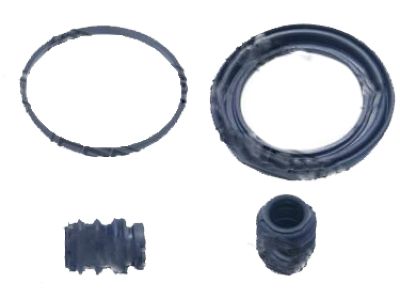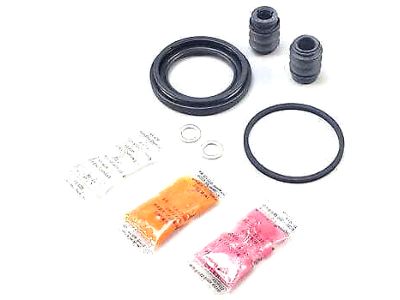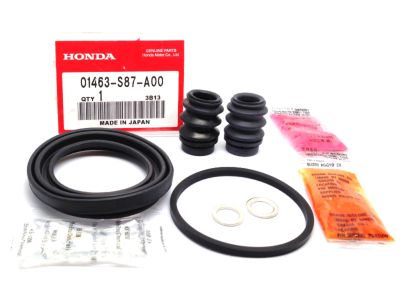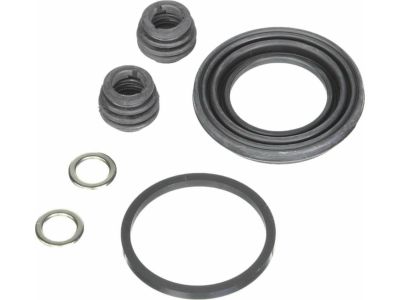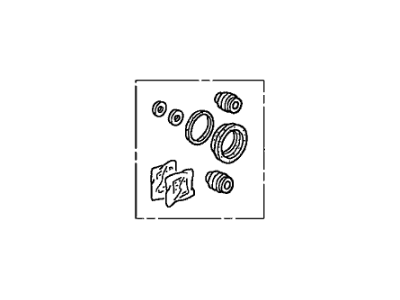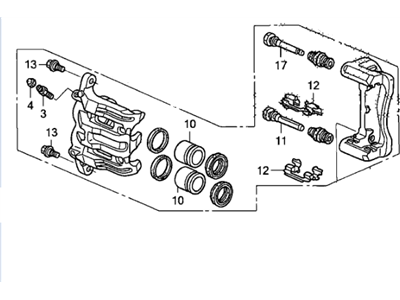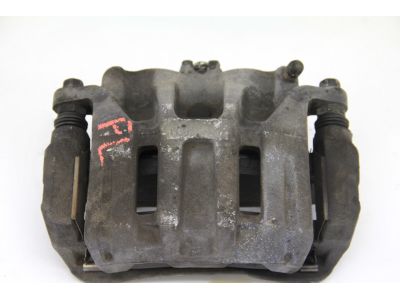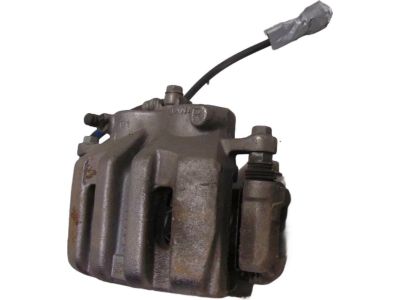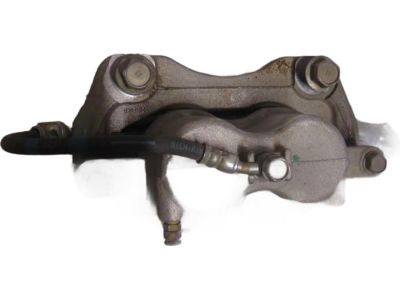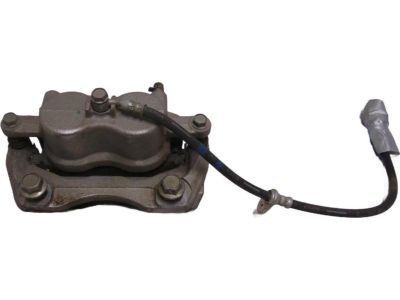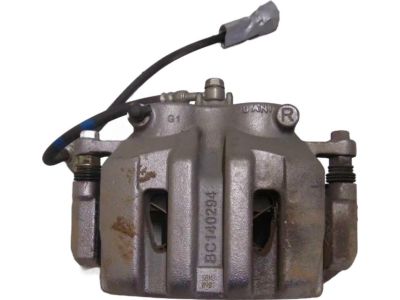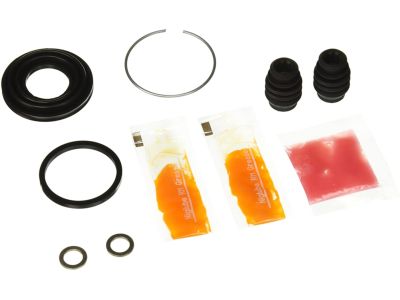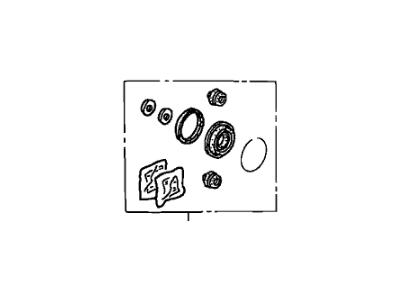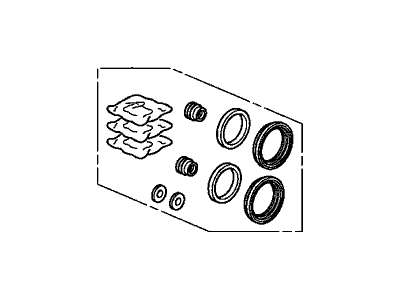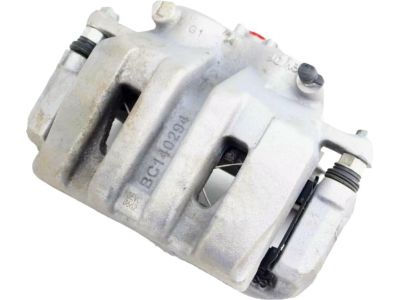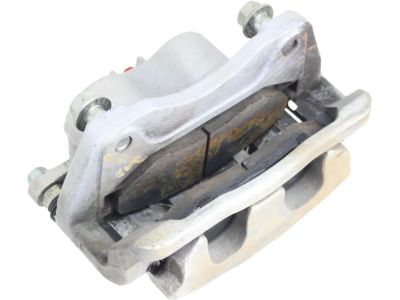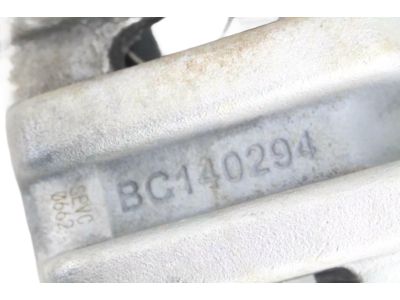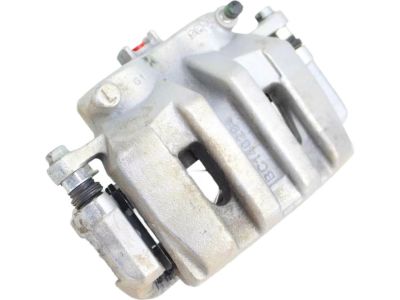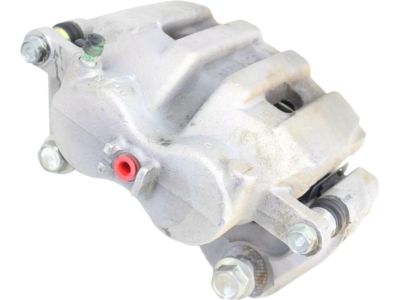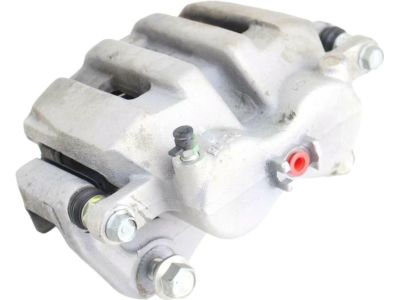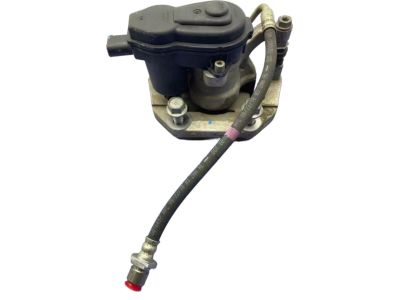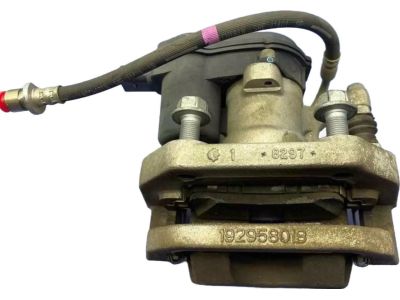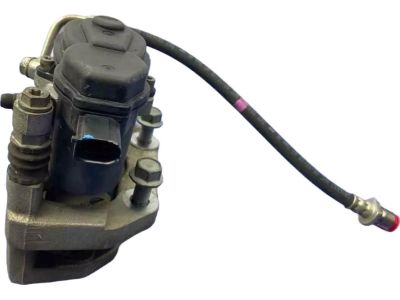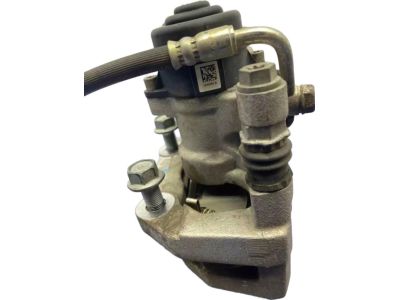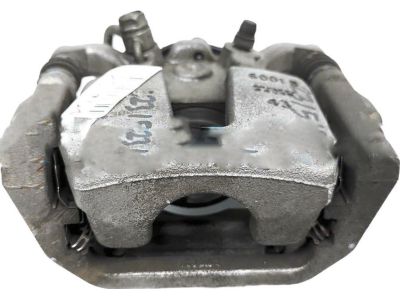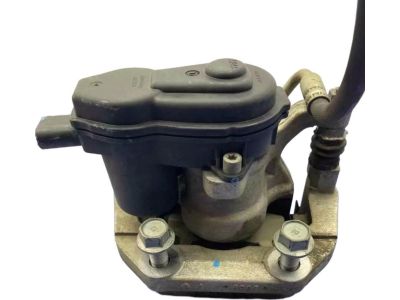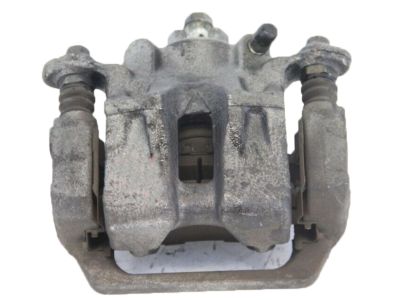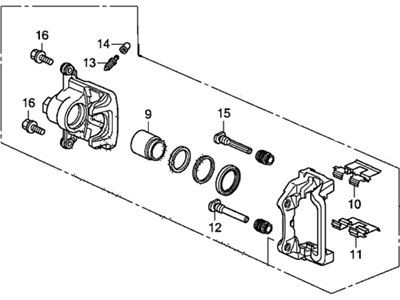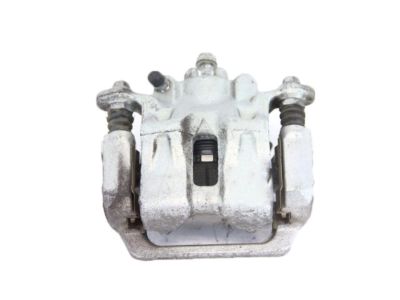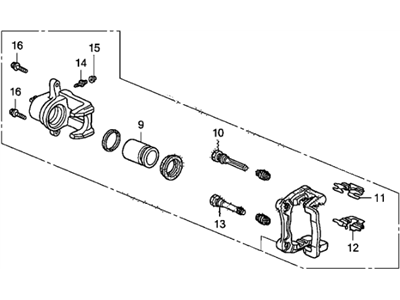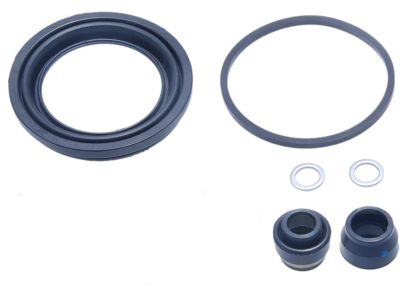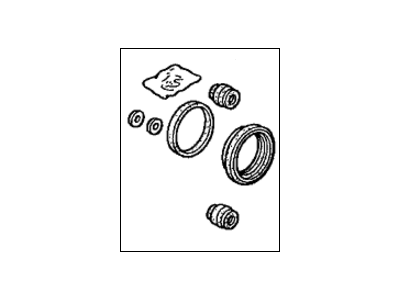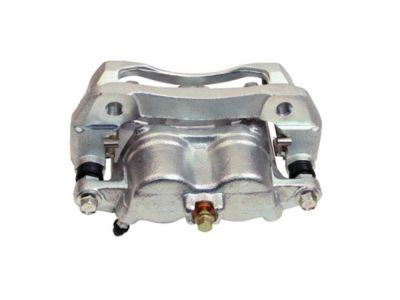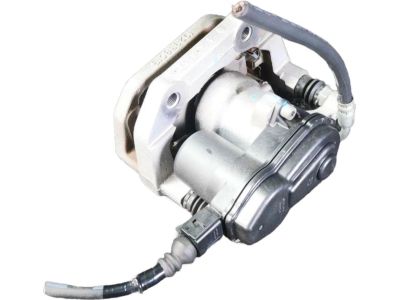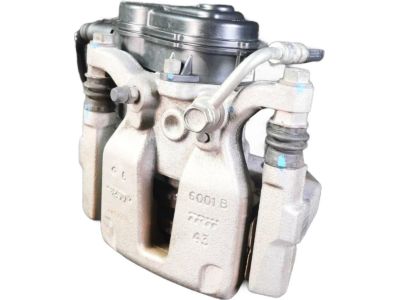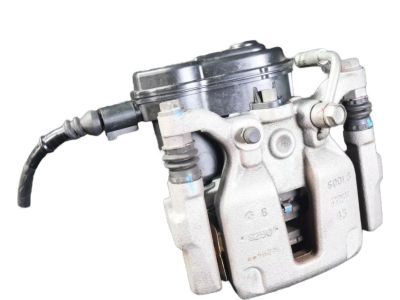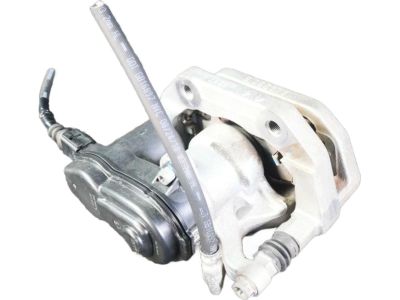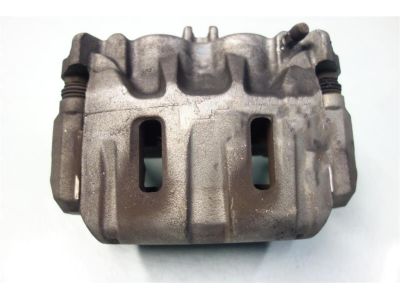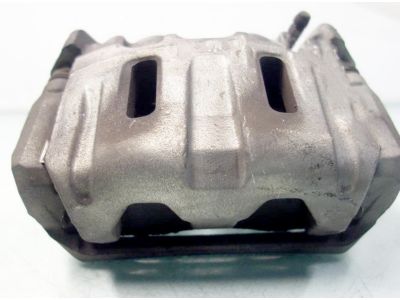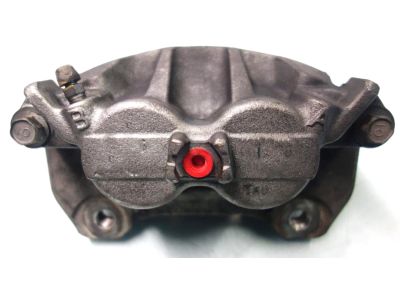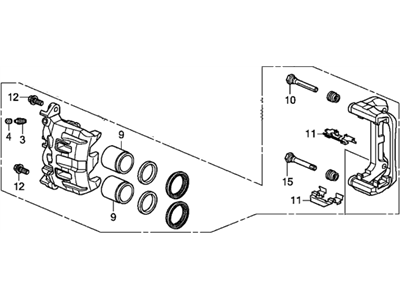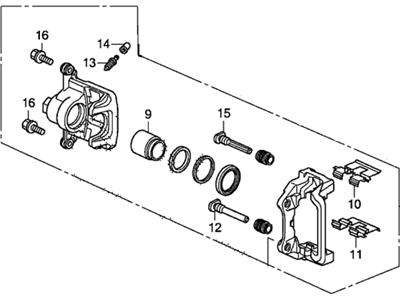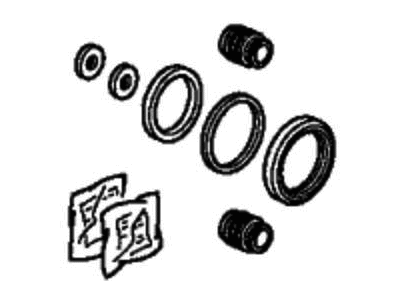×
- Hello
- Login or Register
- Quick Links
- Live Chat
- Track Order
- Parts Availability
- RMA
- Help Center
- Contact Us
- Shop for
- Honda Parts
- Honda Accessories

My Garage
My Account
Cart
Genuine Honda Odyssey Brake Caliper
Caliper- Select Vehicle by Model
- Select Vehicle by VIN
Select Vehicle by Model
orMake
Model
Year
Select Vehicle by VIN
For the most accurate results, select vehicle by your VIN (Vehicle Identification Number).
41 Brake Calipers found




Honda Odyssey Caliper Sub-Assembly, Driver Side
Part Number: 45019-SHJ-A01$273.00 MSRP: $388.88You Save: $115.88 (30%)
Honda Odyssey Caliper Sub-Assembly, Passenger Side
Part Number: 45018-SHJ-A01$273.00 MSRP: $388.88You Save: $115.88 (30%)
Honda Odyssey Front Caliper Sub-Assembly
Part Number: 45018-THR-A01$200.56 MSRP: $285.70You Save: $85.14 (30%)


Honda Odyssey Front Caliper Sub-Assembly
Part Number: 45019-THR-A01$200.56 MSRP: $285.70You Save: $85.14 (30%)
Honda Odyssey Caliper Sub-Assembly, Right Rear
Part Number: 43018-THR-A00$294.62 MSRP: $419.68You Save: $125.06 (30%)
Honda Odyssey Caliper Sub-Assembly, Right Rear
Part Number: 43018-SHJ-A01$293.61 MSRP: $418.25You Save: $124.64 (30%)
Honda Odyssey Caliper Sub-Assembly, Left Rear
Part Number: 43019-TK8-A00$280.80 MSRP: $400.00You Save: $119.20 (30%)
Honda Odyssey Caliper Sub-Assembly, Left Rear
Part Number: 43019-SHJ-A01$293.61 MSRP: $418.25You Save: $124.64 (30%)
Honda Odyssey Caliper Set, FR. (64MM)
Part Number: 01463-S0X-010$23.39 MSRP: $33.03You Save: $9.64 (30%)

Honda Odyssey Caliper Sub-Assembly, Passenger Side (Reman)
Part Number: 45018-SHJ-A01RM$137.19 MSRP: $193.18You Save: $55.99 (29%)
Honda Odyssey Caliper Sub-Assembly, Left Rear
Part Number: 43019-THR-A00$294.62 MSRP: $419.68You Save: $125.06 (30%)
Honda Odyssey Caliper Sub-Assembly, Left Front
Part Number: 45019-TK8-A01$273.00 MSRP: $388.88You Save: $115.88 (30%)
Honda Odyssey Caliper Sub-Assembly, Right Rear
Part Number: 43018-TK8-A00$280.80 MSRP: $400.00You Save: $119.20 (30%)
| Page 1 of 3 |Next >
1-20 of 41 Results
Honda Odyssey Brake Caliper
The Brake Caliper in the automobile particularly in the Honda Odyssey has a strategic function of converting the hydraulic pressure from the master cylinder into the mechanical force required to clamp the brake pads on to the rotors thus slowing or stopping the car. Honda Odyssey Brake Calipers can be categorized into two main types: namely fixed and floating. In fixed caliper, calipers have multiple pistons on both side of the rotor apply equal force as required while in floating type, pistons are present on only one side and slide over the rotor which sometime results sticking of floating caliper or more wear of pads. Honda Odyssey Brake Calipers Today, there are many types of Honda Odyssey brake calipers, there are those for standard use or those purchased from original equipment (OE) manufacturers and the performance ones, which provide better stopping power and look better. Some of the differences between these calipers are in the construction material and the difference in the design making them suitable for different performances and easier to fix in case of any issues. As a result, proper inspection and maintenance of the Brake Caliper helps to improve on the braking system in Honda Odyssey vehicles.
In search of affordable OEM Honda Odyssey Brake Caliper? Consider browsing through our extensive inventory of genuine Honda Odyssey Brake Caliper. Not only do we provide market-leading prices and a manufacturer's warranty, but we also pride ourselves on exceptional customer service and swift delivery.
Honda Odyssey Brake Caliper Parts Questions & Experts Answers
- Q: Should you always replace calipers in pairs and follow specific procedures for installation and removal on Honda Odyssey?A:Always replace the calipers in pairs - never replace just one of them. For the front, begin by loosening the lug nuts on the front wheels without removing them, then raise the front of the vehicle and secure it on jackstands before removing the front wheels. Disconnect the Brake Line from the caliper and plug it to prevent contaminants from entering the brake system and to minimize brake fluid loss; if only accessing other components, the hose does not need to be disconnected. Remove the caliper mounting bolts while holding the caliper pins with a second wrench, then detach the caliper from its mounting bracket. For installation, reverse the removal procedure, ensuring to replace the sealing washers on either side of the brake line fitting with new ones, and tighten the caliper mounting bolts and the banjo bolt to the specified torque. After that, bleed the brake system, install the wheels and lug nuts, and lower the vehicle, tightening the wheel lug nuts to the specified torque. For the rear, loosen the lug nuts on the rear wheels without removing them, raise the rear of the vehicle, and secure it on jackstands before removing the rear wheels. Unscrew the banjo bolt and detach the brake line from the caliper, plugging the fitting to prevent fluid loss and contamination; again, if only accessing other components, the hose does not need to be disconnected. Remove the caliper mounting bolts while holding the caliper pins with a second wrench, then detach the caliper from its mounting bracket. For installation, reverse the removal procedure, replacing the sealing washers on either side of the brake line fitting with new ones, and tighten the caliper mounting bolts and the banjo bolt to the specified torque. Finally, bleed the brake system, install the wheels and lug nuts, lower the vehicle, and tighten the lug nuts to the specified torque.
Related Honda Odyssey Parts
Browse by Year
2024 Brake Caliper 2023 Brake Caliper 2022 Brake Caliper 2021 Brake Caliper 2020 Brake Caliper 2019 Brake Caliper 2018 Brake Caliper 2017 Brake Caliper 2016 Brake Caliper 2015 Brake Caliper 2014 Brake Caliper 2013 Brake Caliper 2012 Brake Caliper 2011 Brake Caliper 2010 Brake Caliper 2009 Brake Caliper 2008 Brake Caliper 2007 Brake Caliper 2006 Brake Caliper 2005 Brake Caliper 2004 Brake Caliper 2003 Brake Caliper 2002 Brake Caliper 2001 Brake Caliper 2000 Brake Caliper 1999 Brake Caliper 1998 Brake Caliper 1997 Brake Caliper 1996 Brake Caliper 1995 Brake Caliper
